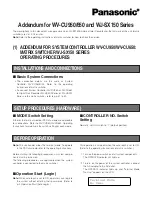
156
Figure 39
MPLS VPN tunnel selection diagram
As shown in
, PE 1 and PE 2 have multiple tunnels in between and they are connected to
multiple MPLS VPNs. You can control the paths for VPN traffic by using one of the following methods:
•
Configure multiple tunnel policies, and specify a preferred tunnel for each policy by using the
preferred-path
command. Apply these policies to different MPLS VPNs to forward the traffic of each
VPN over a specific tunnel.
•
Configure one tunnel policy, and use the
select-seq load-balance-number
command to specify the
tunnel selection order and the number of tunnels for load balancing. Apply the tunnel policy to
MPLS VPNs to forward the traffic of every VPN over multiple tunnels.
The second method distributes traffic of a single VPN to multiple tunnels. The transmission delays on
different tunnels can greatly vary. Therefore, the destination device or the upper layer application might
take a great time to sequence the packets. HP recommends not using the second method.
Configuration procedure
To configure a tunnel policy:
Step Command
Remarks
1.
Enter system view.
system-view
N/A
2.
Create a tunnel policy,
and enter tunnel policy
view.
tunnel-policy
tunnel-policy-name
By default, no tunnel policy is
configured.
3.
Configure tunnel
selection methods.
•
(Method 1) Specify a preferred
tunnel:
preferred-path tunnel
number
•
(Method 2) Configure the tunnel
selection order and the number of
tunnels for load balancing:
select-seq
{
cr-lsp
|
lsp
} *
load-balance-number
number
Configure one or both methods.
By default, no preferred tunnel is
specified.
By default, only one tunnel is
selected in LSP—CRLSP order.
NOTE:
For a VPN to exclusively use a tunnel, you can specify the tunnel as the preferred tunnel in a tunnel policy,
and apply the policy only to that VPN.
















































